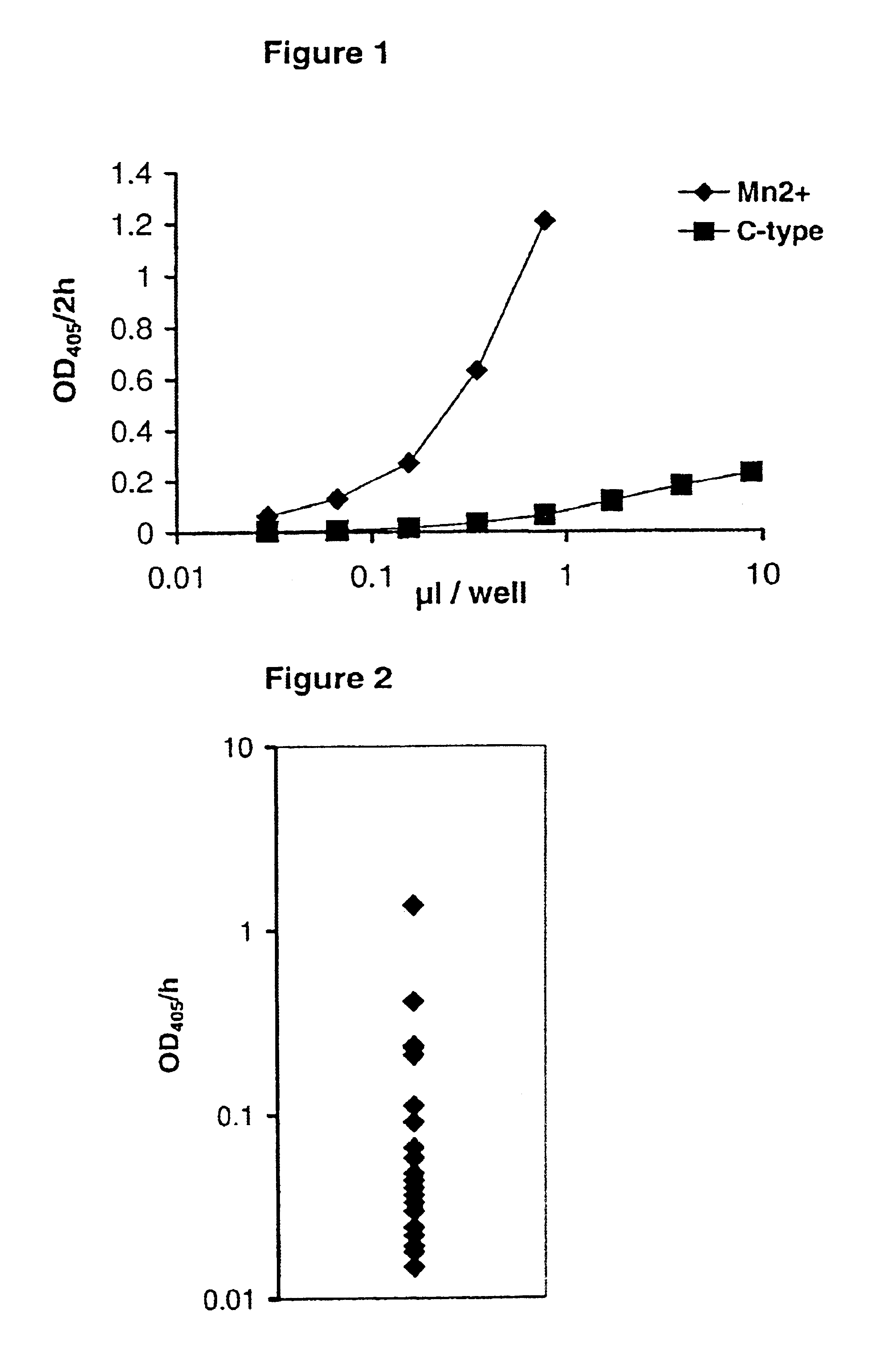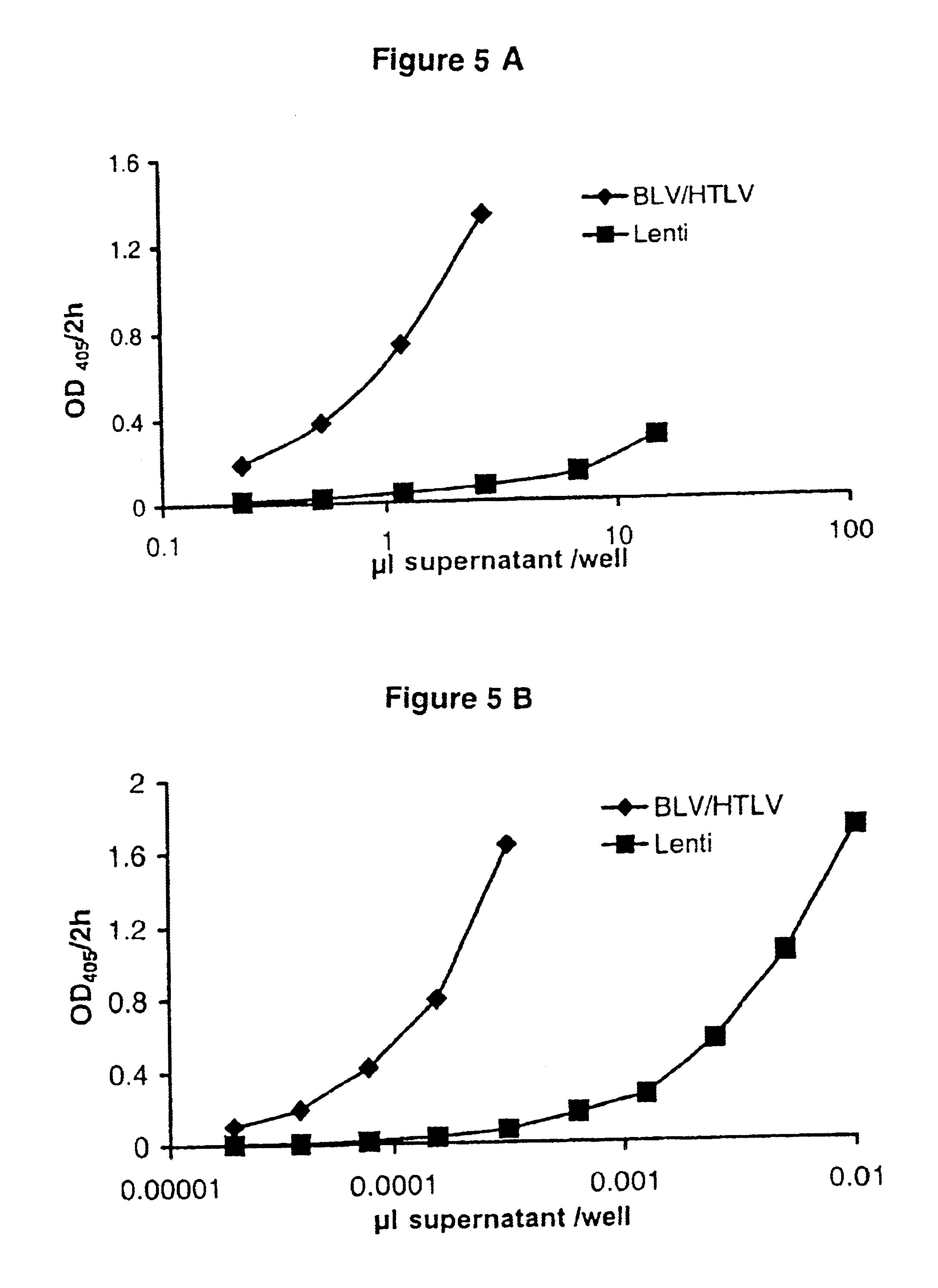Reverse transcriptase assay kit, use thereof and method for analysis of RT activity in biological samples
a reverse transcriptase and kit technology, applied in the field of reverse transcriptase assay kit, use thereof and method for analysis of rt activity in biological samples, can solve the problems of symbiotic ervs provided by the transplanted tissues, affecting the env gene mainly, and affecting the env gene,
- Summary
- Abstract
- Description
- Claims
- Application Information
AI Technical Summary
Benefits of technology
Problems solved by technology
Method used
Image
Examples
example 1
Improved Detection of PERV (Porcine Endogenous Retrovirus) RT in Cell Supernatants.
The porcine cell line PK-15 (porcine kidney) is known to continuously produce small amounts of PERV. Supernatants from a culture of PK-15 cells were serially diluted. The capacity of the C-type RT assay of Cavidi tech AB and the Mn2+ assay of the current invention to detect RT activity at each dilution were tested. The data shown in FIG. 1 originate from an over-night-RT assay.
The assay kit of the invention exhibits an approximately 25 times increased sensitivity compared to the one of previous art. It was not possible to use more sample to compensate for the difference in detection sensitivity, since the C-type assay suffered from increased background levels and deviations from linearity with time and / or sample amount at higher supernatant concentrations (>2 μl / well).
The assay kit of the invention can be used in studies regarding the possible transfer of exogenous retrovirus and / or activation of endo...
example 2
Direct Measurement of Reverse Transcriptase in Synovial Fluids.
Recent DNA hybridization experiments have suggested the association between certain rheumatic disorders and the presence of retrovirus associated sequences. Frozen samples of synovial fluids from patients with rhematoid arthritis were obtained from the department of Rheumatology at Karolinska sjukhuset, Stockholm, Sweden. The samples had been cleared from cells and debris by low speed centrifugation before freezing. The samples were thawed, serially diluted and investigated for RT activity.
The activities obtained were recalculated to OD405 / h. FIG. 2 presents the RT activities found using 1 μl sample and an over-night enzyme reaction in the synovial fluid RT assay of the invention. No RT activity was detected in any of the investigated samples by the Lenti or C-type RT assay of Cavidi Tech AB.
example 3
Detection of RT Activity in Extracts from Human Breast Cancer.
An exogenous or endogenous human counterpart to the (mouse mammary tumor virus) MMTV has been implicated in the etiology of human breast cancer. Using recombinant MMTV RT to optimize the assay conditions, RT activity could be detected in extracts from breast cancers without prior concentration or purification. Frozen extracts from human breast cancers were obtained from the department of Oncology at Akademiska sjuhuset, Uppsala, Sweden. The tumor tissue had been homogenized and suspended in a standard buffer (pH 7.4). Supernatants were collected after clarification by low speed centrifugation. The samples were thawed, serially diluted and investigated for presence of RT activity in the Mg2+ RT assay of the invention and the Lenti or C-type RT assay of Cavidi Tech AB.
FIG. 3 shows a representative example of the results obtained using an over-night RT reaction combined with 2 hours AP reaction. The difference in detection ...
PUM
| Property | Measurement | Unit |
|---|---|---|
| temperature | aaaaa | aaaaa |
| temperature | aaaaa | aaaaa |
| volume | aaaaa | aaaaa |
Abstract
Description
Claims
Application Information
 Login to View More
Login to View More - R&D
- Intellectual Property
- Life Sciences
- Materials
- Tech Scout
- Unparalleled Data Quality
- Higher Quality Content
- 60% Fewer Hallucinations
Browse by: Latest US Patents, China's latest patents, Technical Efficacy Thesaurus, Application Domain, Technology Topic, Popular Technical Reports.
© 2025 PatSnap. All rights reserved.Legal|Privacy policy|Modern Slavery Act Transparency Statement|Sitemap|About US| Contact US: help@patsnap.com



